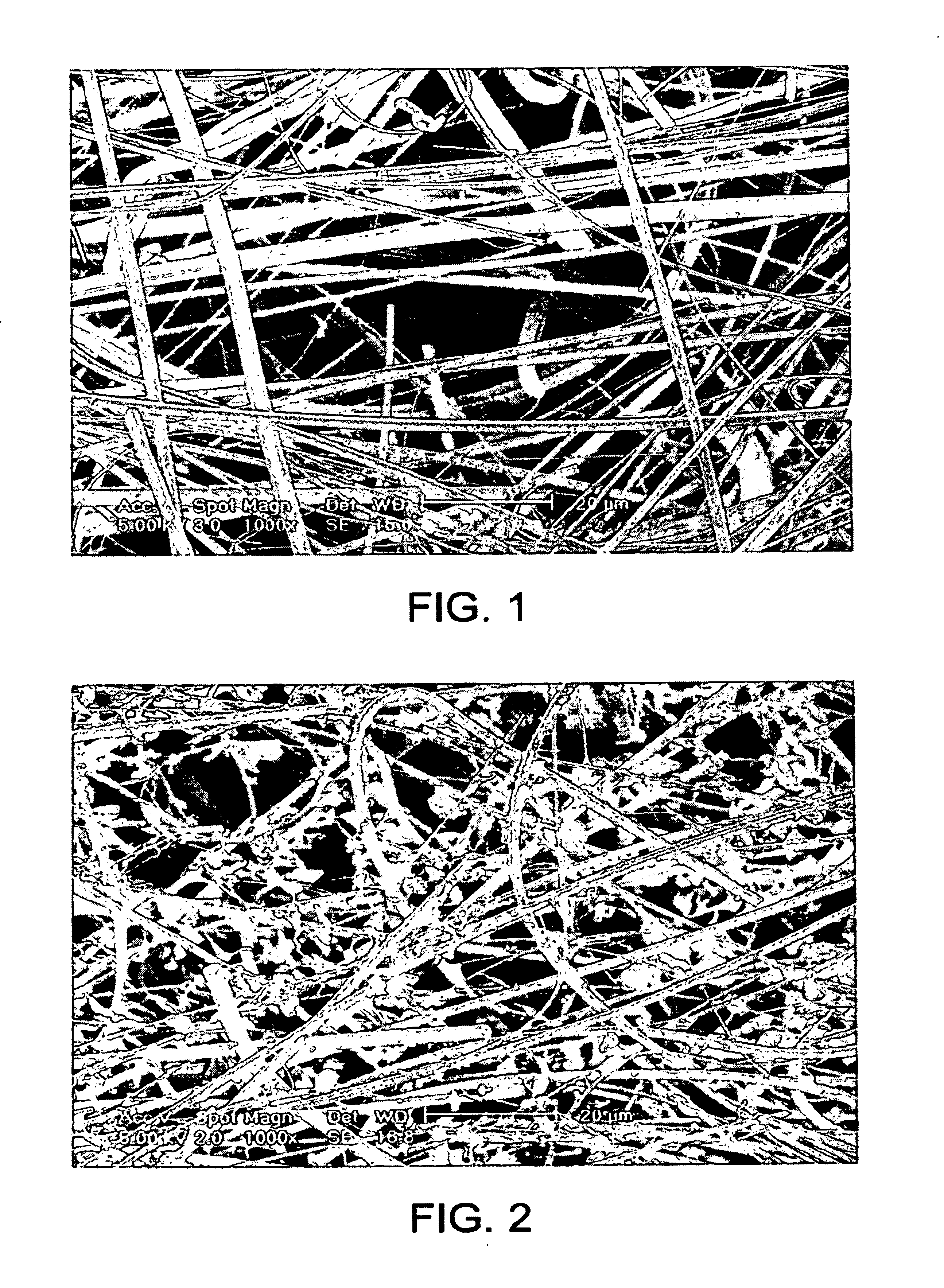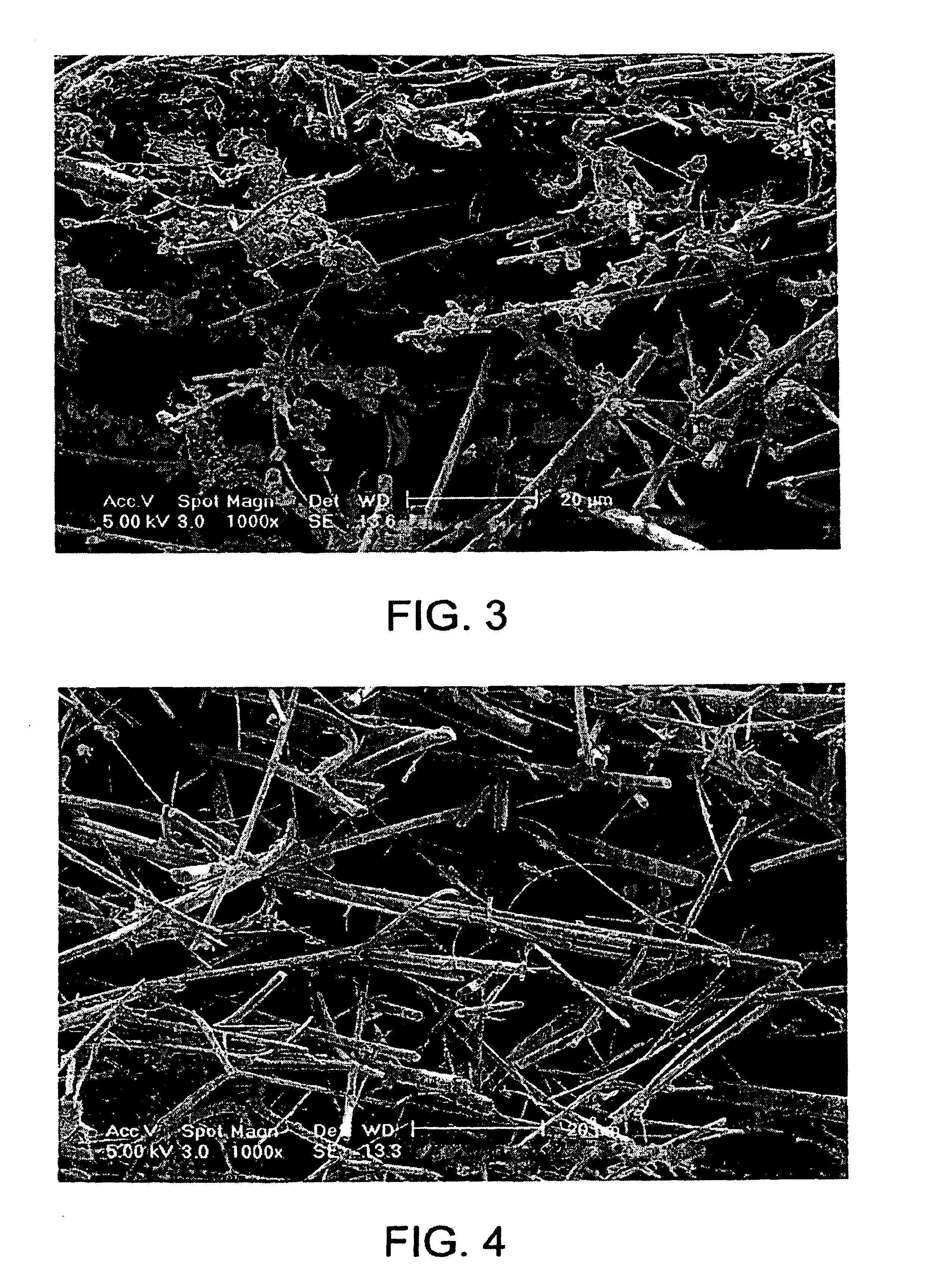Methods for the isolation of nucleic acids and for quantitative DNA extraction and detection for leukocyte evaluation in blood products
- Summary
- Abstract
- Description
- Claims
- Application Information
AI Technical Summary
Benefits of technology
Problems solved by technology
Method used
Image
Examples
example 1
Preparation of Purified Product Using an Elution Method
[0209]DNA extraction from 200 μl of human whole blood was carried out using the present method. The protocol was as follows:[0210]1) Add 200 μl of whole blood to the column, add 1000 μl of red blood cell lysis solution (RBCL), filter to waste.[0211]2) Add 1000 μl RBCL, filter to waste.[0212]3) Add 1000 μl 0.5% SDS, filter to waste.[0213]4) Add 1000 μl TE−1, filter to waste.[0214]5) Add 100 μl TE−1, filter to waste.[0215]6) Incubate at 90° C. for ten minutes.[0216]7) Add 100 μl TE−1, filter to capture DNA solution.
[0217]The mean DNA yield for the present method is 30-40 μg per ml of blood. About 80% of the DNA product is greater than 40 kb. The approximate time per cycle is 20 minutes, i.e. significantly faster than presently known methods.
[0218]At various stages of the method, the filter and the retentate were analyzed by scanning electron microscopy (SEM) in order to reveal the mechanism of cell retention, DNA retention and DNA...
example 2
Filter Depth for Filter Used in Elution Method
[0227]It has hitherto been unknown to use a filter in the dual role of white cell capture and DNA capture. Once the white cells are lysed, it is believed that the filter acts as a depth filter to the DNA. In order to explore this, the following investigation was undertaken.
[0228]A number of filters were stacked in an extraction column and DNA was isolated from 500 μl of whole blood in accordance with the following protocol:[0229]1) Add 500 μl of red blood cell lysis solution to the blood and filter to waste.[0230]2) Add 500 μl 0.5% SDS solution and filter to waste.[0231]3) Add 500 μl mM Tris-HCl pH 8.5 and filter to waste.[0232]4) Add 500 μl mM Tris-HCl pH 8.5 and incubate for 50 min at 82° C.[0233]5) Filter and capture DNA eluant.
[0234]Prior to the final incubation and elution step the filters were removed and each one eluted and incubated individually. FIG. 10 shows that there seems to be a gradient of DNA capture from the top filter t...
example 3
Filter Depth for Filter Used in Elution Method
[0236]Analysis has shown that DNA recovery can be improved within the system by increasing the number of filters within the column. An experiment was performed according to the protocol below to assess the percentage of DNA captured by each subsequent layer of filter by processing whole blood using a 4-layered extraction column.
Protocol
[0237]1) Add 200 μl of whole human blood to the 2 ml-extraction vessel.[0238]2) Add 1 ml of RBCL and filter directly to waste.[0239]3) Add a further 1 ml of RBCL and filter directly to waste.[0240]4) Add 1 ml of 0.5% SDS and filter directly to waste.[0241]5) Add 1 ml of TE−1 and filter directly to waste.[0242]6) Add 100 μl of TE−1 and incubate at 90° C. for 8 minutes.[0243]7) Add 200 μl of TE−1 and collect.
[0244]The filters were removed prior to the elution step and the DNA collected off each filter separately. The most DNA was recovered from the uppermost filter and the least DNA was recovered from the lo...
PUM
| Property | Measurement | Unit |
|---|---|---|
| temperature | aaaaa | aaaaa |
| temperature | aaaaa | aaaaa |
| diameters | aaaaa | aaaaa |
Abstract
Description
Claims
Application Information
 Login to View More
Login to View More - R&D
- Intellectual Property
- Life Sciences
- Materials
- Tech Scout
- Unparalleled Data Quality
- Higher Quality Content
- 60% Fewer Hallucinations
Browse by: Latest US Patents, China's latest patents, Technical Efficacy Thesaurus, Application Domain, Technology Topic, Popular Technical Reports.
© 2025 PatSnap. All rights reserved.Legal|Privacy policy|Modern Slavery Act Transparency Statement|Sitemap|About US| Contact US: help@patsnap.com



